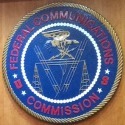
According to a new report from the analysts at Wall Street firm New Street Research, the FCC will likely vote in November to free up 300MHz of spectrum in the C-Band for 5G.
At least, that's the conclusion that the analysts have drawn from a new round of filings on the topic at the FCC. The C-Band remains a topic of hot debate among companies in the wireless, satellite and media industries. Wireless companies have been clamoring for the agency to release more mid-band spectrum like the C-Band for 5G; they argue such spectrum provides the right balance between coverage and capacity, and that it will aid the US in its "race" against China to 5G. Satellite and media companies, meantime, have warned that they make extensive use of the C-Band and that the FCC should not embark on extensive changes to the band.
As for the FCC, officials there have remained relatively tightlipped about how the agency will move forward on the issue, though several FCC commissioners have acknowledged that the agency will likely take some kind of C-Band action this year.
Devils in the details
At the heart of the C-Band debate is whether the FCC re-allocates 500MHz of spectrum between 3.7GHz to 4.2GHz for commercial wireless uses, including 5G -- and if it does, how exactly it might do so. The satellite companies that are currently using the C-Band -- Intelsat, SES, Eutelsat and Telesat -- want to keep 300MHz of the total 500MHz in the band for their existing content-delivery operations. However, wireless companies including AT&T and T-Mobile are urging the FCC to reallocate more than that. "T-Mobile has urged the Commission to focus on making available for 5G wireless services the greatest amount of C-Band spectrum possible," the operator wrote in one of its recent filings to the FCC.
The analysts at New Street wrote that the FCC likely will side in part with the wireless industry by reallocating fully 300MHz of the C-Band for 5G and other commercial uses, not just 200MHz as satellite industry wants.
When questioned on the topic by Light Reading this week, a spokesperson for the C-Band Alliance -- which is comprised of satellite companies Intelsat, SES, Eutelsat and Telesat -- declined to address the topic directly. However, she pointed to a recent comments from Intelsat CEO Steve Spengler acknowledging the US government's desire to clear as much spectrum for 5G as possible, though he argued the FCC should do so "without significant disruption to the consumers and businesses that rely on C-Band services today.”
C-Band worries
Some of the companies that deliver services over C-Band spectrum are urging the FCC to leave the spectrum alone.
"GCI has invested well over $100 million in developing and deploying the C-Band over the past 35 years in order to provide fixed satellite service (“FSS”) long-distance voice and data communications (including long-haul voice trunks, wireless backhaul for voice and data, Internet access, and private line data circuits) and improve service availability for rural Alaskan customers that oftentimes do not have any other communications option," the Alaskan telecom operator wrote to the FCC. As a result, GCI argued that "the state of Alaska must be excluded from any reallocation of the C-Band."
Simillary, some of the nation's biggest content companies -- including Disney, Discovery, CBS and Fox -- have urged the FCC not to disrupt their existing operations that rely on the C-Band. The The Church of Jesus Christ of Latter-day Saints (widely known as the Mormon church) and National Public Radio have also written to the FCC to make sure that their existing C-Band operations are not affected by any reallocation.
FCC gaining leverage over CBA
Despite such complaints, the analysts at New Street wrote that a new proposal from a coalition among Charter, the Competitive Carriers Association (CCA) and ACA Connects is helping to put pressure on the CBA and other C-Band users. The Charter/CCA/ACA proposal calls for the FCC to re-allocate up to 370MHz of spectrum, and to deploy fiber in places where that re-allocation might affect existing C-Band systems. However, GCI, Disney and others have argued that fiber is not a suitable alternative to C-Band spectrum.
"The coalition proposal now provides [FCC] Chairman [Ajit] Pai significant negotiating leverage that he might have thought he did not have before," the analysts wrote. "That is, while in 2018 CBA suggested that if the FCC did not do what it wanted, there was no viable alternative for reallocating spectrum for 5G, Pai now has the ability to argue back that there are alternatives."
Surprising alliances
Although AT&T and T-Mobile have blasted the CBA's proposal, Verizon has largely voiced support for elements of the CBA option. However, what appears to be driving Verizon is not necessarily a belief that the CBA's option is the best but instead an overriding desire to get the FCC to release C-Band spectrum for 5G "as quickly as possible."
Meantime, cable company Altice appears to have sided with Charter, CCA and the ACA, arguing that the coalition's proposal "is far preferable to the plan of the C-Band Alliance." Altice also wrote that it has used both C-Band spectrum and fiber for content delivery, and that it has found that fiber can make a suitable replacement for C-Band operations.
— Mike Dano, Editorial Director, 5G & Mobile Strategies, Light Reading | @mikeddano
About the Author(s)
You May Also Like












